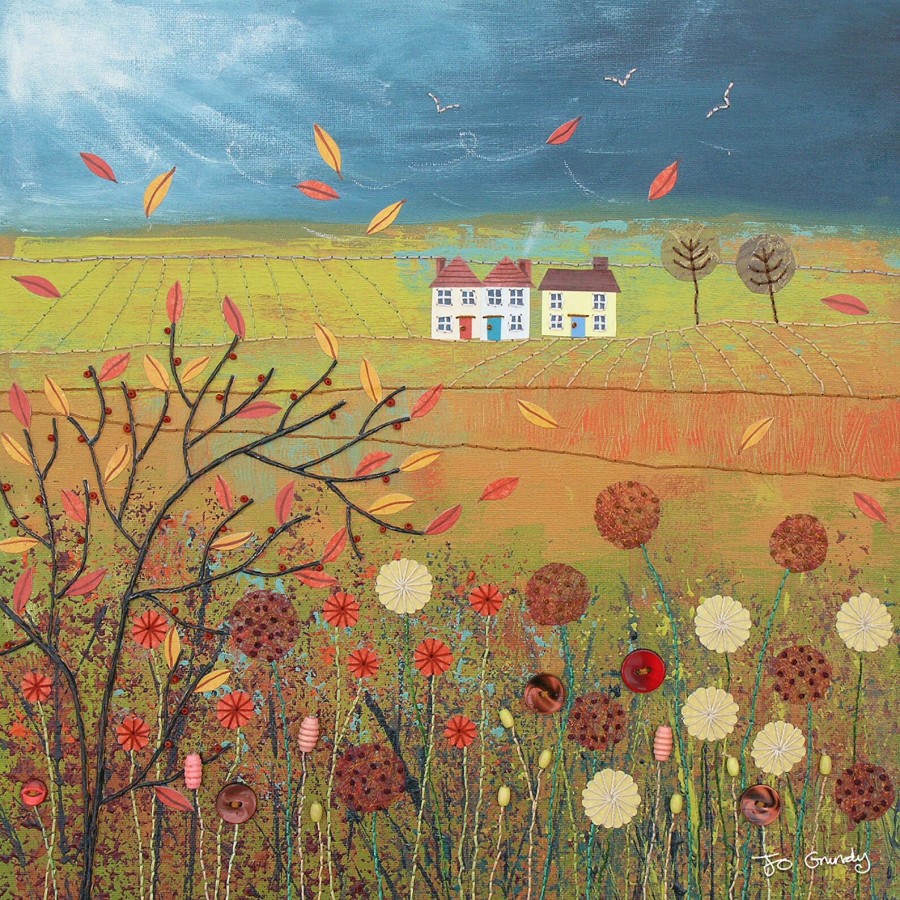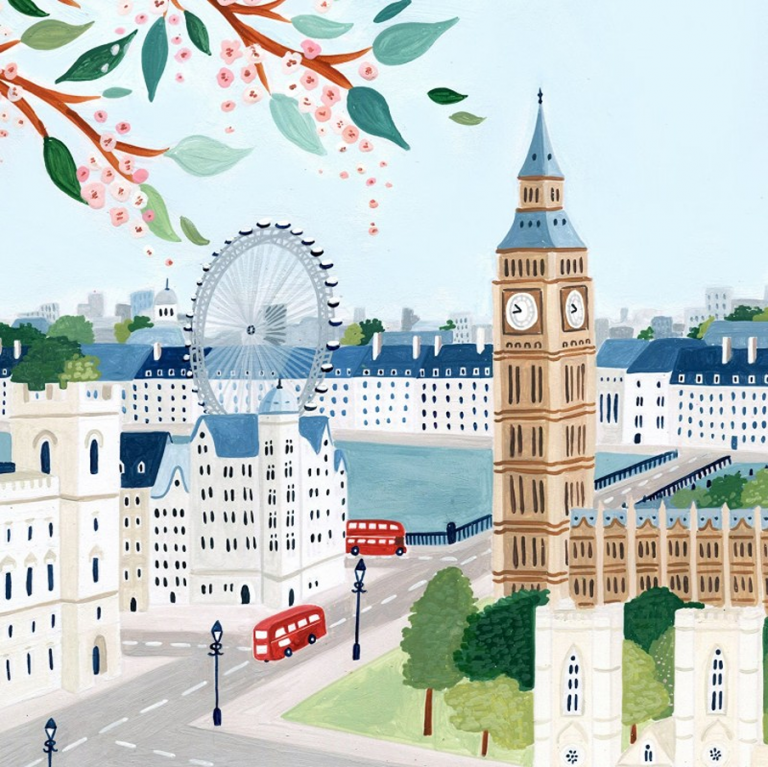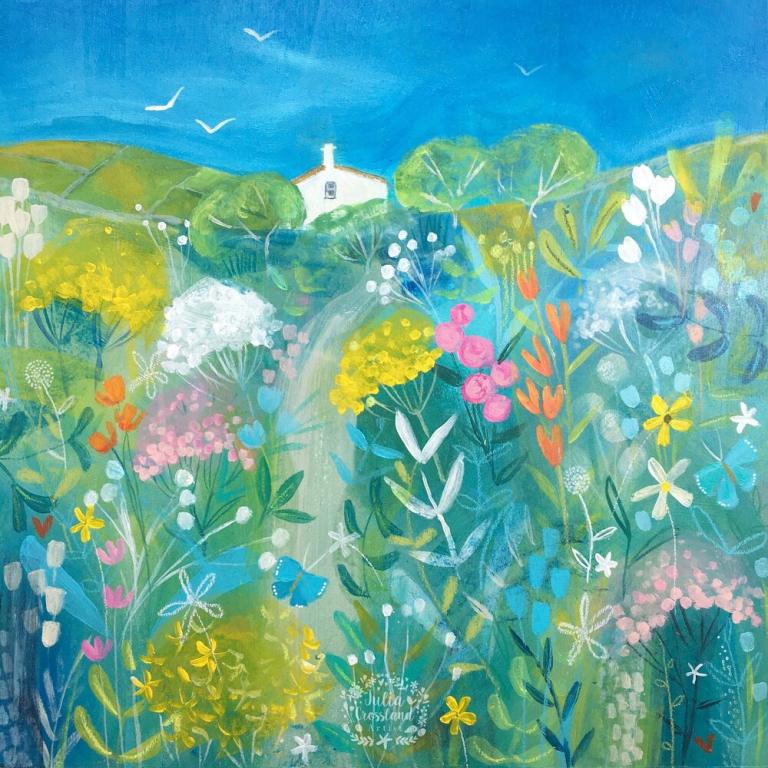
Wind is basically caused by differences of atmospheric pressure (the rising and sinking of air). Low pressure is when rises, and high pressure is when it sinks. Wind can be good (a gentle sea breeze or a nice way to get your washing dry outside). It does tend to blow cheap umbrellas inside-out so read our post on windproof umbrellas (avoid using umbrellas in thunderstorms, see below).
Causes of Gale Force Winds in England
The phrase “gale force wind” describes a specific strength: winds that hit or exceed 32 knots (37 mph) on the Beaufort scale. In England, these gales are usually born far out in the Atlantic Ocean where huge, swirling low-pressure systems form. The jet stream, a high-speed ribbon of air miles above the earth, acts like a conveyor belt. It steers these deep depressions directly towards the British Isles.
Picture wind as a river of air. Sometimes, these rivers flow gently, but when a pressure difference sharpens (like between a deep low and a stubborn high), the air is squeezed tighter and flows faster. When these rivers of wind encounter valleys, hills, or steep coasts, the effect is intensified, whipping up gusts that can rattle windows.
Unlike hurricanes and typhoons—which spin up in tropic seas—England’s gales come from “extratropical” storms. These storms feed on the sharp contrast between cold polar air and mild Atlantic air. When a frontal system sweeps in, the clash of temperatures creates an engine for strong winds and driving rains.
As moist air rises in the storm, it cools and forms clouds thick with droplets and ice. The friction between particles generates static electricity. When enough charge builds up, it snaps through the sky in a bolt of lightning, followed instantly by thunder. On a stormy night, it can feel like nature itself is putting on a show.
England’s Stormiest Locations
Some parts of England catch more than their fair share of strong winds. Coastal areas facing the Atlantic are the most exposed. The southwest coast, especially Cornwall and Devon, regularly experiences high wind speeds. Here, the sea brings in storm after storm, with very little to slow the wind before it hits land.
The Lake District and Yorkshire Moors also see frequent gales. Their steep valleys and exposed moorland give the wind a perfect pathway. In the Scottish Borders, rolling hills accelerate gusts that can batter farms and small villages. Open farmland, hilltops, and clifftops are often more at risk than low, sheltered areas.
A mix of geography and weather patterns explains this. Locations with few trees, high ground, or lots of open water, like Morecambe Bay, have less to block or slow the wind. Storms race in from the ocean, funnelling through gaps in the hills and picking up speed, making these pockets more storm-prone than the milder east.
Morecambe Bay has quicksand, so follow safety for people and dogs.
The windiest place in the world is Antarctica, with winds of up to 150mph.
Weather Warnings and Storm Naming
England’s storm forecasting has improved dramatically in recent years. The Met Office issues colour-coded weather warnings—yellow, amber, and red—to alert the public well in advance. The system is simple and easy to follow:
- Yellow means ‘be aware’ (check for updates)
- Amber means ‘be prepared’ (expect disruption)
- Red means ‘take immediate action (danger to life possible)
Warnings are shared on TV, radio, and through the Met Office app. If a red warning is announced, most local events and travel plans will shut down.
The public help in naming storms, which is done so that there is a simple system for safety on both land and sea. The storms are jointly named with weather forecasters in Ireland and The Netherlands, so everyone is hearing the same name, when hearing Severe Weather Warnings.
There are no storm names beginning with the letters Q, U, X, Y and Z, in line with the US National Hurricane Centre. In case they need to tell people of a storm on the other side of the pond.
What Causes Thunder & Lightning?
Thunderstorms occur when there are electrical discharges, these cause unstable air, resulting from warm air (and colder air underneath). This results in flashes of light and sound waves. Usually it also rains or hails. Or you may even get ‘thundersnow’.
The East Midlands receives the most thunderstorms in England. Worldwide, thunderstorms are more common in hot and humid weather, like rainforests. Venezuela has the most thunderstorms on earth, often receiving them for over 150 nights a year, lasting up to 10 hours.
To determine how far away a thunderstorm is, count the seconds from the lighting flash to the thunder boom. Divide by five, and you’ll know how many miles away you are from the storm.
Safety Tips During Thunderstorms
Prepare your home in advance:
- Trim trees and shrubs
- Secure or move loose objects indoors (bins, garden furniture)
- Board up windows in exposed locations
Emergency supplies like torches, spare batteries, bottled water, and basic first aid kits should be ready, especially in rural areas where power cuts may last.
- Head indoors, if you can. Stay away from windows and doors (lighting can travel, and flying debris from strong winds can break windows). If less than 30 seconds pass between lightning and thunder, seek shelter for at least 30 minutes
- Avoid using plugged-in computers, TVs, phones or any wired device (charge devices beforehand or use battery power only). Turn off the mains switch, if safe to do so. Or use surge protectors.
- Skip showers, baths and washing dishes (or any running water).
- Keep a safe distance from trees (and open space and hilltops) and metal objects (umbrellas, golf clubs, motorbikes, wheelchairs, tent poles).
- Stay inside cars (usually). People in convertibles with fabric tops should find a safe building, as the fabric could catch fire, if struck).
- Concrete walls and floors (like basements) often have metal bars or wires. Sit on a chair, or use a non-metal mat, to avoid direct contact.
If exposed to lighting, squat close to the ground with hands on knees, and tuck your head between them, touching as little of the ground with your body (don’t lie down). If your hand stands on end, drop to the above position immediately.
Pets are often terrified of thunder, so bring them indoors if you can, and sit with them in a secure quiet room, closing the windows and curtains.
Barn animals (cows, horses, goats, chickens) can also be led sheds or barns, ensure they eat beforehand. Use surge protectors during storms. And it’s best to avoid turning on the lights. Ensure the doors and fences are strong. And leave soft bedding (like straw) on the floor, with plenty of fresh water nearby.
Storms in a Changing Climate
There is mounting evidence connecting rising temperatures to more frequent and severe gales in England. The Atlantic Ocean is noticeably warmer than in previous decades. The jet stream is changing shape more often, looping or speeding up, which sometimes means one stormy week after another. This results in storms that pack more punch or arrive at odd times of the year.
While England will never see hurricanes like those in Florida or the Caribbean, the ripple effects from those powerful systems can cross the Atlantic. Some hurricanes lose steam, transform into powerful lows, and still bring strong winds and rain.
Modern forecasting tools, such as high-resolution weather models and radar, provide earlier and more accurate alerts. Emergency planners use these forecasts to protect vulnerable infrastructure. Communities are reinforcing flood defences, updating building codes, and investing in resilient transport systems.
What Were England’s Worst-Ever Storms?
- Bristol Channel (1607) killed 2000 people and many farm animals, caused either by a spring tide surge or possibly a tsunami.
- The Great Storm (1703) killed thousands of people (mostly in southern England) and swept away Eddystone Lighthouse in Cornwall.
- The Great Blizzard (1891) killed 200 people and 6000 animals, and shut down roads, railways and brought down trees in Cornwall and Devon.
- North Sea Flood (1953) flooded huge areas of Eastern England, drowning 326 people and forcing 30,000 people from their homes. This storm led to the Thames Barrier being built, to stop the City of London having something similar occur.
- The Big Freeze (1963) was one of the coldest ever winters, which lasted until March. Many rivers and lakes froze. Literary buffs will know this was the harsh winter when the American poet Sylvia Plath killed herself, in a London flat once lived in by fellow poet YB Yeats.
- The Great Storm (1087) was unfairly blamed on weather forecaster Michael Fish (he did give a warning, but the Met Office was not so accurate – they would have predicted it today). 18 people died along with 15 million trees being lost, and thousands of people went without power.
- Storm Ciara (2020) on England’s south coast brought gusts of up to 97mph, and left at least 20,000 people without power.
- Storm Arwen (November 2021) brought down thousands of mature trees in Cumbria. Three people died (and a puppy from hypothermia, after the roof tore off an animal shelter). Millions of people lost power. The storm affected the Scottish North Sea coast, when hundreds of grey seal pups were lost from beaches.
- Storm Eunice (2022) put the Isle of Wight on red alert, with wind speeds of 122pm (the fastest ever recorded in England).
- Storm Darragh (2024) was a rare red alert in southwest England, when winds of up to 90mph brought down trees and power lines, leaving tens of thousands of people without power for days. Trains and airports were also forced to cancel services.
Poetry Break: Who Has Seen the Wind?
This short poem is by Christina Rossetti, who although she had Italian heritage, is one of England’s most celebrated poets:
Who has seen the wind?
Neither I nor you.
But when the leaves hang trembling,
The wind is passing through.
Who has seen the wind?
Neither you nor I.
But when the trees bow down their heads,
The wind is passing by.






